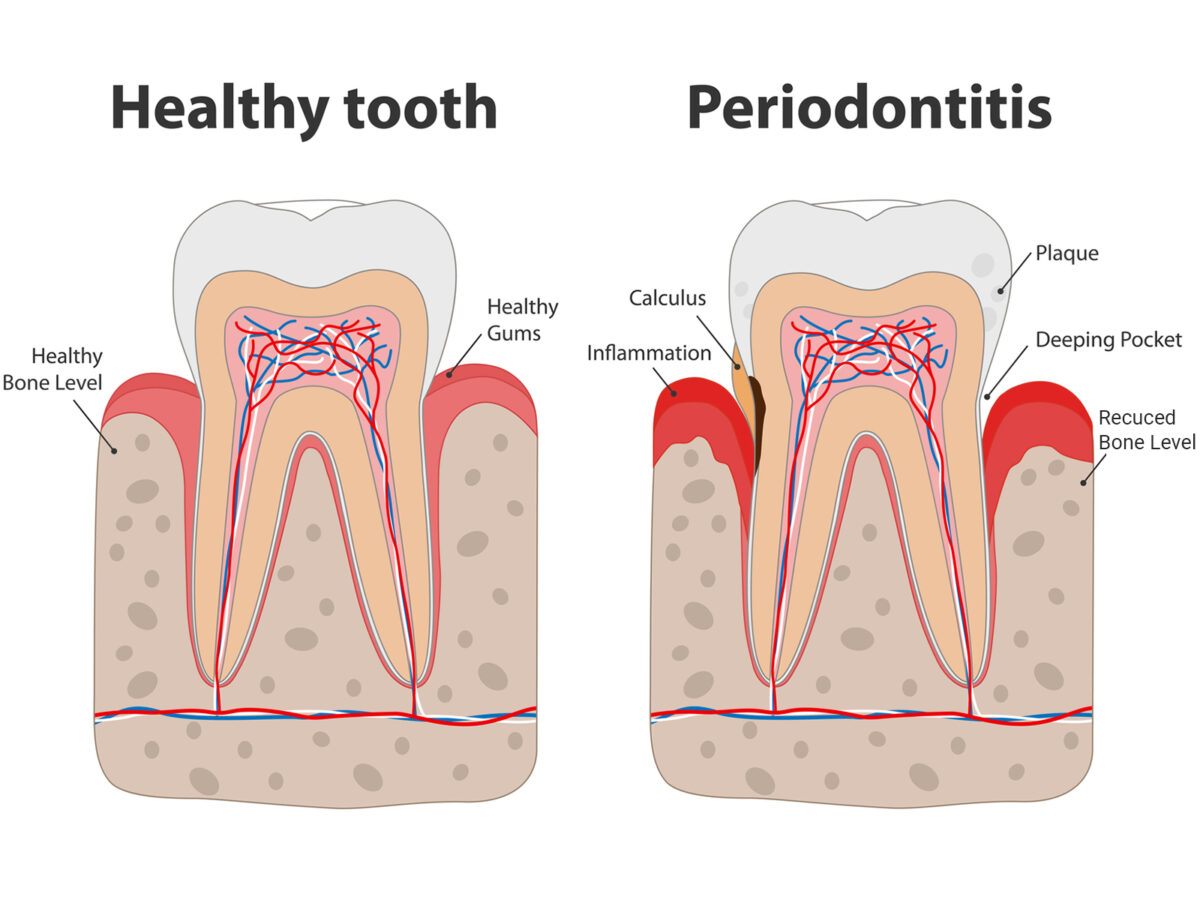Blog
Dental hygiene tips for healthy teeth & gums

What is a Periodontal Pocket?
If you have not had problems with your teeth, you most likely have not thought much about your gums. You feel that they fit snugly around your teeth and are not the cause of any dental troubles. But you are not aware of what issues might be lurking around your gums if the distance between your gum and teeth starts to widen depth-wise. Such a structural change can cause gum disease, further deepening spaces around your teeth, forming pockets called periodontal pockets. They usually occur when there is a destruction of supporting periodontal tissues and exfoliation and loosening of the teeth. When these pockets fill with bacteria, causing infections, they can become quite painful.
How does a Periodontal Pocket Form?
Teeth are mostly held snugly in the sockets by bones and gum tissues. When for some reason, bacteria in your mouth is not getting cleaned regularly, especially around the edges of your gum, it leads to plaque or biofilm built-up. These pockets could also happen due to some gum disease-causing tissue erosion. The bacteria, if not cleaned, start causing damage to the jaw bone as the plaque hardens into tartar. You cannot brush off this tartar on its own.
What is Gingivitis?
In case the plaque hardens and becomes tartar, you would need professional help to clean it up. But if left untreated, bacteria would continue to attach to the tartar on your gums, causing inflammation of the tissue. This problem is called Gingivitis – the first stage of periodontal disease.
Some Facts about Periodontal Pockets
Periodontal pockets are measured in mm (millimeter) and are approximately the size of the width of a credit card. Not all the pockets come into the harmful category; here is a quick look at what measurement of a pocket could damage your gum tissue:
- Width = 1 to 3 mm – Considered normal
- Width = 4 to 5 mm – Denotes gum disease and is in an early or mild stage of periodontitis.
- Width = 5 to 7 mm – Considered as moderate periodontitis.
- Width = 7 to 12 mm – Considered as severe or advanced periodontitis.
How is Periodontal Disease Diagnosed?
You could suspect periodontal disease if you have any of the signs mentioned below –
- Bad breath
- Bleeding of gums
- Red and swollen gums
- Receding gum tissue
Eliminating the Periodontal Pockets
- Professional cleaning – An aggressive oral hygiene and professional dental cleaning can reduce the pockets, which are of 4 to 5 mm size. You might be given an antimicrobial mouthwash and also asked to brush and floss twice.
- Scaling and root planning – Using laser or ultrasonic devices or hand instruments like scalers and curettes, the dentist would remove the tartar and plaque around your teeth. This kind of cleaning will give a chance for your gum to tighten its hold around your teeth.
- Flap surgery – If the pockets seem bottomless or there has been bone loss, then you might require surgery by a periodontist to save your teeth.
You must visit your dentist when you experience early signs of periodontal disease so that you can quickly eliminate these unhealthy pockets. You must also take at-home measures and administer proper oral hygiene like regular cleaning, flossing, using mouthwash, eliminating sugary food, etc.
Book an Appointment to find out which treatment might be best for you.


